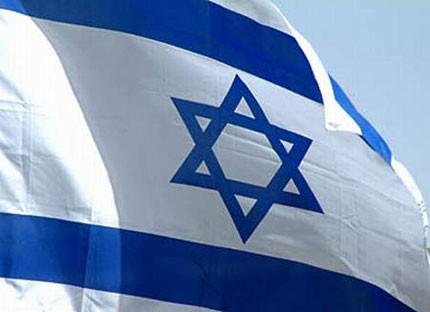|
|
General: VIRGEN CATOLICA=MARIA MAGDALENA
Choisir un autre rubrique de messages |
|
Réponse |
Message 1 de 41 de ce thème |
|
DIOS TE SALVE MARIA DE LA IGLESIA CATOLICA ES ESOTERICO CON REFERENCIA A MARIA MAGDALENA
DIOS TE SALVE MARIA (OSHANAH RABBAH-21 DE TISHRI-UNGIMIENTO DE BETANIA)
LLENA ERES DE GRACIA (JUAN SIGNIFICA GRACIA)
EL SEÑOR ES CONTIGO
BENDITA TU ERES ENTRE TODAS LAS MUJERES Y BENDITO ES EL FRUTO DE TU VIENTRE JESUS (FRUTO=TERCER DIA DE LA CREACION=TERCER DIA DE LA SEMANA=MARTES=SANGRE=PLANETA ROJO=LINAJE-JESUS SIGNIFICA YHWH SALVA, OSEA QUE TAMBIEN TIENE REFERENCIA A OSHANAH RABBAH-21 DE TISHRI)
SANTA MARIA MADRE DE DIOS (MARIA-MIRYAM-MAR-TERCER DIA DE LA CREACION-MARTE-PLANETA ROJO-LINAJE-ROSE LINE. LA EXPRESION "MADRE DE DIOS" ES GRIALICA-DIOS (HECHOS 28:6-SALMOS 45:6,7-HEBREOS 1:8,9) ES EN RANGO, OSEA COMO REY Y NO COMO DIVINIDAD INTRINSECA)
RUEGA POR NOSOTROS PECADORES AHORA Y EN LA HORA DE NUESTRA MUERTE AMEN
|
|
A gauche, l'emblème maçonnique.
A droite, l'"étoile de David".
Deux barres ou lignes horizontales appliquées sur le compas et l'équerre maçonniques suffisent à faire de l'emblème une étoile de David.
|
|
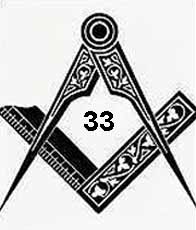
GEMATRIA AMEN (INGLES)=33
NOTEN QUE ESTAN LA AM (V CORTA EN EL CENTRO), OSEA UNA REFERENCIA A LA ESTRELLA DE 6 PUNTAS
33 is not only a numerical representation of “the Star of David,” but also the numerical equivalent of AMEN: 1+13+5+14=33...
NUMERO 33 (RELACION CON EL PERIODO SIDEREO DE MERCURIO) / ESTRELLA DE DAVID / INTERRELACION CON ORION EN FUNCION AL AFELIO Y PERIHELIO DE MERCURIO
En aquel tiempo, respondiendo Jesús, dijo:
Te alabo, Padre, Señor del cielo y de la tierra,
que hayas escondido estas cosas (la Gnosis, la Sabiduría Oculta)
de los sabios (de los eruditos) y de los entendidos, (de los intelectuales)
y las hayas revelado á los niños. (A los Iniciados). Así, Padre, pues que así agradó en tus ojos."
(Mateo 11: 25-26). (El cielo y la tierra, es la alquimia, osea la ESCALERA DE JACOB. La cuadratura del circulo es el patron matematico de la alquimia y esta basado, insisto, en el numero de oro. Justamente Salomon es un tipo del GRIAL.)
"¡Oh profundidad de las riquezas de la sabiduría (sophia)
y de la ciencia (gnwsiV, gnosis) de Dios!
¡Cuán incomprensibles son sus juicios, e inescrutables sus caminos!"
(Romanos, 11: 33). (Camino es una referencia a MERCURIO y Juicio es una referencia a ORION=ESPADA. EL NUMERO 33 NO ESTA POR CASUALIDAD. ES UNA REFERENCIA A LA ESTRELLA DE 6 PUNTAS. OSEA QUE EN LA MISMA PALABRA ESTA CODIFICADA LA RELACION ORION-MERCURIO-VIA LACTEA. PENSAR QUE HAY IGNORANTES QUE DICEN QUE LOS ESCRITORES DE LA BIBLIA NO CONOCIAN EL PI. ESA ES LA SOBERBIA DEL SER HUMANO QUE SE CREE TENER MAS DERECHOS QUE EL CREADOR. ASI ESTA EL MUNDO. SOLO EN JESUCRISTO ESTA LA VERDADERA LIBERACION DE LA EGOLATRIA, IDOLATRIA Y DEL PECADO.)
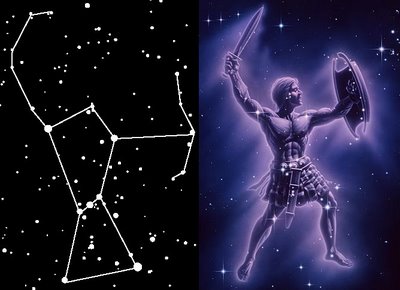
ESPADA=ORION
This shows Mercury's Inferior Conjunctions with Earth which make a triangle.
Now here are Mercury's Superior Conjunctions with Earth that make an inverted triangle.
Here is what we get when both of these synodic periods are added together.
The star of David.
33 SIMBOLIZAN A LOS DOS TRIANGULOS (INFERIOR Y SUPERIOR)
|
|
|
|
Réponse |
Message 12 de 41 de ce thème |
|
EL SANTO GRIAL ESTA CODIFICADO EN EL DISEÑO DEL VATICANO EN FUNCION A LAS PLEYADES
1 Pedro 5:13: La iglesia que está en Babilonia, elegida juntamente con vosotros, y Marcos mi HIJO, os saludan.
Versiculo que esta en clave. INTERRELACIONA BABILONIA (BABYLON EN INGLES-BABY ES BEBE) CON LA IGLESIA/MARIA MAGDALENA Y JUAN MARCOS. OBVIAMENTE PEDRO LE LLAMA "MI HIJO" EN UN CONTEXTO A QUE EL MISMO FUE HIJO DE NUESTRO SEÑOR JESUCRISTO Y MARIA MAGDALENA. ¿PORQUE EL FUERTE NEXO JUAN MARCOS CON PEDRO?
Mateo
16:1 Vinieron los fariseos y los saduceos para tentarle, y le pidieron que les mostrase señal del cielo.
16:2 Mas él respondiendo, les dijo: Cuando anochece, decís: Buen tiempo; porque el cielo tiene arreboles.
16:3 Y por la mañana: Hoy habrá tempestad; porque tiene arreboles el cielo nublado. ¡Hipócritas! que sabéis distinguir el aspecto del cielo, ¡mas las señales de los tiempos no podéis!
16:4 La generación mala y adúltera demanda señal; pero señal no le será dada, sino la señal del profeta Jonás. Y dejándolos, se fue.
16:5 Llegando sus discípulos al otro lado, se habían olvidado de traer pan.
16:6 Y Jesús les dijo: Mirad, guardaos de la levadura de los fariseos y de los saduceos. (¿fiesta de las levaduras? ¿Porque PEDRO APARECE A MARIA LA MADRE DE JUAN MARCOS EN CONTEXTO A LA FIESTA DE LAS LEVADURAS en contexto a HECHOS 12:12? ¿PORQUE JUAN MARCOS ES UN NEO-JONAS YA QUE NO FUE CON PABLO A MALTA en contexto a HECHOS 12, 13, 14 Y 15?)
16:7 Ellos pensaban dentro de sí, diciendo: Esto dice porque no trajimos pan.
16:8 Y entendiéndolo Jesús, les dijo: ¿Por qué pensáis dentro de vosotros, hombres de poca fe, que no tenéis pan?
16:9 ¿No entendéis aún, ni os acordáis de los cinco panes entre cinco mil hombres, y cuántas cestas recogisteis?
16:10 ¿Ni de los siete panes entre cuatro mil, y cuántas canastas recogisteis?
16:11 ¿Cómo es que no entendéis que no fue por el pan que os dije que os guardaseis de la levadura de los fariseos y de los saduceos?
16:12 Entonces entendieron que no les había dicho que se guardasen de la levadura del pan, sino de la doctrina de los fariseos y de los saduceos.
16:13 Viniendo Jesús a la región de Cesarea de Filipo, preguntó a sus discípulos, diciendo: ¿Quién dicen los hombres que es el Hijo del Hombre? (CESAREA DE PHI-LIPO ESTABA EN LA TRIBU DE DAN AL PIE DEL MONTE HERMON. DAN TIENE FUERTE NEXO CON LA VIUDA. EL CALENDARIO JULIANO NO FUE POR CASUALIDAD QUE DENOMINO A JULIO EL SEPTIMO MES Y EN FUNCION A LA ESTRELLA SIRIO. EL OJO OMNISCIENTE QUE APARECE EN LA PARTE SUPERIOR DE LA PIRAMIDE TRUNCADA SIMBOLIZA A SIRIO/UN OJO EN EL CIELO. EL CALENDARIO JULIANO-GREGORIANO DE ORIGEN EGIPCIO ESTA DISEÑADO EN FUNCION A LA ESTRELLA SIRIO. EL CALENDARIO DE NOE TENDRIA ESTE PATRON)
16:14 Ellos dijeron: Unos, Juan el Bautista; otros, Elías; y otros, Jeremías, o alguno de los profetas.
16:15 El les dijo: Y vosotros, ¿quién decís que soy yo?
16:16 Respondiendo Simón Pedro, dijo: Tú eres el Cristo, el Hijo del Dios viviente.
16:17 Entonces le respondió Jesús: Bienaventurado eres, Simón, hijo de Jonás, porque no te lo reveló carne ni sangre, sino mi Padre que está en los cielos. ("hijo de Jonas" tiene nexo con la "señal de Jonas")
16:18 Y yo también te digo, que tú eres Pedro, y sobre esta roca edificaré mi iglesia; y las puertas del Hades no prevalecerán contra ella. (NUMERO DE ORO) (MARIA MAGDALENA SIMBOLIZA A LA IGLESIA/NUEVA JERUSALEM. AQUI NUESTRO SEÑOR INDUDABLEMENTE BUSCA UN NEXO ESOTERICO CON SU ESPOSA Y EL GRIAL-S-OPHI-A/SABIDURIA-ONE EN EL BILLETE DE UN DOLAR ES UN ANAGRAMA DE NOE)
El Número de Oro; Phi; la Divina Proporción

16:19 Y a ti te daré las llaves del reino de los cielos; y todo lo que atares en la tierra será atado en los cielos; y todo lo que desatares en la tierra será desatado en los cielos.
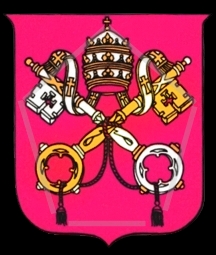

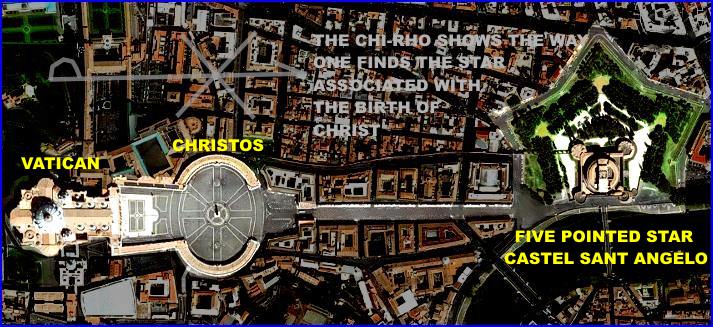
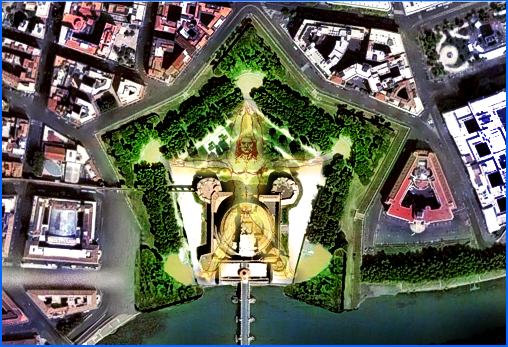 
El numero 5 en la Biblia es el numero de la gracia. Es el numero de la alquimia, la cuadratura del circulo simbolizada en la Biblia por la escalera de Jacob. En el mismo diseño del numero esta codificada en su parte superior el cuadrado y en su parte inferior el circulo. Concretamente en dicha cuadratura, esta la simbologia espiritual del SANTO GRIAL osea el linaje entre Nuestro Señor Jesucristo y Maria Magdalena. La gran piramide de Keop, construida con el mismo patron de la Nueva Jerusalen, esta diseñada en funcion a la CUBICACION DE UNA ESFERA en funcion al NUMERO DE ORO PHI=1.618033 Y AL MISMO NUMERO PI=3.14. DIOS MANEJA LA HISTORIA Y LA CIENCIA. LA LLAVE DE DAVID ESTA CODIFICADA EN APOCALIPSIS EN LA IGLESIA DE PHILADELPHIA, osea la sexta. PHI-LADEL-PHI-A (EN EGIPTO SIGNIFICABA UTERO DE ISIS) tambien era la ciudad de RABA/AMMAN que tenia 7 colinas al igual que la MISMA CIUDAD DE JERUSALEN (PLEYADES). OSEA QUE NUESTRO SEÑOR EN LA SEXTA IGLESIA DE APOCALIPSIS 3 (LAS SIETE IGLESIAS SON TAMBIEN LAS PLEYADES) HACE REFERENCIA A LA LLAVE DE DAVID.
2. Isaías 22:22: Y pondré la LLAVE de la casa de David sobre su hombro; y abrirá, y nadie cerrará; cerrará, y nadie abrirá.
3. Mateo 16:19: Y a ti te daré las LLAVEs del reino de los cielos; y todo lo que atares en la tierra será atado en los cielos; y todo lo que desatares en la tierra será desatado en los cielos.
6. Apocalipsis 3:7: Escribe al ángel de la iglesia en Filadelfia: Esto dice el Santo, el Verdadero, el que tiene la LLAVE de David, el que abre y ninguno cierra, y cierra y ninguno abre:
The seven stars are not mentioned again until Rev. 1:16, 1:20, 2:1, 3:1 as the seven churches in Asia
2 Samuel
12:1 Jehová envió a Natán a David;y viniendo a él, le dijo: Había dos hombres en una ciudad, el uno rico, y el otro pobre.
12:2 El rico tenía numerosas ovejas y vacas;
12:3 pero el pobre no tenía más que una sola corderita, que él había comprado y criado, y que había crecido con él y con sus hijos juntamente, comiendo de su bocado y bebiendo de su vaso, y durmiendo en su seno; y la tenía como a una hija.
12:4 Y vino uno de camino al hombre rico; y éste no quiso tomar de sus ovejas y de sus vacas, para guisar para el caminante que había venido a él, sino que tomó la oveja de aquel hombre pobre, y la preparó para aquel que había venido a él.
12:5 Entonces se encendió el furor de David en gran manera contra aquel hombre, y dijo a Natán: Vive Jehová, que el que tal hizo es digno de muerte.
12:6 Y debe pagar la cordera con cuatro tantos, porque hizo tal cosa, y no tuvo misericordia.
12:7 Entonces dijo Natán a David: Tú eres aquel hombre. Así ha dicho Jehová, Dios de Israel: Yo te ungí por rey sobre Israel, y te libré de la mano de Saúl,
12:8 y te di la casa de tu señor, y las mujeres de tu señor en tu seno; además te di la casa de Israel y de Judá; y si esto fuera poco, te habría añadido mucho más.
12:9 ¿Por qué, pues, tuviste en poco la palabra de Jehová, haciendo lo malo delante de sus ojos? A Urías heteo heriste a espada, y tomaste por mujer a su mujer, y a él lo mataste con la espada de los hijos de Amón.
12:10 Por lo cual ahora no se apartará jamás de tu casa la espada, por cuanto me menospreciaste, y tomaste la mujer de Urías heteo para que fuese tu mujer.
12:11 Así ha dicho Jehová: He aquí yo haré levantar el mal sobre ti de tu misma casa, y tomaré tus mujeres delante de tus ojos, y las daré a tu prójimo, el cual yacerá con tus mujeres a la vista del sol.
12:12 Porque tú lo hiciste en secreto; mas yo haré esto delante de todo Israel y a pleno sol.
12:13 Entonces dijo David a Natán: Pequé contra Jehová. Y Natán dijo a David: También Jehová ha remitido tu pecado; no morirás.
12:14 Mas por cuanto con este asunto hiciste blasfemar a los enemigos de Jehová, el hijo que te ha nacido ciertamente morirá.
12:15 Y Natán se volvió a su casa. Y Jehová hirió al niño que la mujer de Urías había dado a David, y enfermó gravemente.
12:16 Entonces David rogó a Dios por el niño; y ayunó David, y entró, y pasó la noche acostado en tierra.
12:17 Y se levantaron los ancianos de su casa, y fueron a él para hacerlo levantar de la tierra; mas él no quiso, ni comió con ellos pan.
12:18 Y al séptimo día murió el niño; y temían los siervos de David hacerle saber que el niño había muerto, diciendo entre sí: Cuando el niño aún vivía, le hablábamos, y no quería oír nuestra voz; ¿cuánto más se afligirá si le decimos que el niño ha muerto?
12:19 Mas David, viendo a sus siervos hablar entre sí, entendió que el niño había muerto; por lo que dijo David a sus siervos: ¿Ha muerto el niño? Y ellos respondieron: Ha muerto.
12:20 Entonces David se levantó de la tierra, y se lavó y se ungió, y cambió sus ropas, y entró a la casa de Jehová, y adoró. Después vino a su casa, y pidió, y le pusieron pan, y comió.
12:21 Y le dijeron sus siervos: ¿Qué es esto que has hecho? Por el niño, viviendo aún, ayunabas y llorabas; y muerto él, te levantaste y comiste pan.
12:22 Y él respondió: Viviendo aún el niño, yo ayunaba y lloraba, diciendo: ¿Quién sabe si Dios tendrá compasión de mí, y vivirá el niño?
12:23 Mas ahora que ha muerto, ¿para qué he de ayunar? ¿Podré yo hacerle volver? Yo voy a él, mas él no volverá a mí.
12:24 Y consoló David a Betsabé su mujer, y llegándose a ella durmió con ella; y ella le dio a luz un hijo, y llamó su nombre Salomón, al cual amó Jehová, (SALOMON, ES TIPO DEL DISCIPULO AMADO, OSEA JUAN MARCOS, EL HIJO DE CRISTO Y MARIA MAGDALENA)
12:25 y envió un mensaje por medio de Natán profeta; así llamó su nombre Jedidías, a causa de Jehová.
12:26 Joab peleaba contra Rabá de los hijos de Amón, y tomó la ciudad real. (RABA/AMMAN es FILADELFIA perteneciente a DECAPOLIS despues de POMPEYO. FILADELFIA/PHI-LADEL-PHI-A ERA UNA CIUDAD QUE TENIA 7 COLINAS).
12:27 Entonces envió Joab mensajeros a David, diciendo: Yo he puesto sitio a Rabá, y he tomado la ciudad de las aguas.
12:28 Reúne, pues, ahora al pueblo que queda, y acampa contra la ciudad y tómala, no sea que tome yo la ciudad y sea llamada de mi nombre.
12:29 Y juntando David a todo el pueblo, fue contra Rabá, y combatió contra ella, y la tomó.
12:30 Y quitó la corona de la cabeza de su rey, la cual pesaba un talento de oro, y tenía piedras preciosas; y fue puesta sobre la cabeza de David. Y sacó muy grande botín de la ciudad.
 Los siete montes identifican a Jerusalén no Roma: Jerusalén era una ciudad grande extendida a fuera de los muros y cubría los siete montes presentes durante el tiempo de Jesús y los Apóstoles: 1.) Monte Gared; 2.) Monte Goat; 3.) Monte Acra; 4.) Monte Bezetha; 5.) Monte Moriah; 6.) Monte Ofel; 7.) Monte Sion. Por cualquier razón, y por cualquier manos y manipulación, el Mt. Gared, Mt. Goath, Los siete montes identifican a Jerusalén no Roma: Jerusalén era una ciudad grande extendida a fuera de los muros y cubría los siete montes presentes durante el tiempo de Jesús y los Apóstoles: 1.) Monte Gared; 2.) Monte Goat; 3.) Monte Acra; 4.) Monte Bezetha; 5.) Monte Moriah; 6.) Monte Ofel; 7.) Monte Sion. Por cualquier razón, y por cualquier manos y manipulación, el Mt. Gared, Mt. Goath,
|
1. Job 9:9: El hizo la Osa, el Orión y las Pléyades,Y los lugares secretos del sur;
2. Job 38:31: ¿Podrás tú atar los lazos de las Pléyades, O desatarás las ligaduras de Orión?
3. Amós 5:8: buscad al que hace las Pléyades y el Orión, y vuelve las tinieblas en mañana, y hace oscurecer el día como noche; el que llama a las aguas del mar, y las derrama sobre la faz de la tierra; Jehová es su nombre;
|
|
|
|
|
Réponse |
Message 13 de 41 de ce thème |
|
|
|
|
OK friends, here goes. I would ask that those that disagree with the scenario I offer here to hold their peace. I do NOT want this to turn into a referendum on a particular doctrine or theology. Hopefully, we are simply looking for relationships to the Temple service based on symbolic and idiomatic reference and what those relationships might reveal. So please restrict your comments to those relationships. - Thanks you.
NOTE: All quotes are from Alfred Edershiem's "The Temple" unless otherwise noted. All scripture quotes are from the KJV.
It is my purpose to show the book of the Revelation as viewed from the perspective of the Yom Kippur Temple service. The two divisions of forty-two months that make up the seven year period are representative of the morning and evening service in the Temple. I find it interesting that the first three and one half years that encompass the time of the "peace treaty" relate to the daylight hours and the second half that is filled with the judgment relate to the nighttime.
I wrote a couple of earlier posts about the Apostle John that might be considered groundwork for these posts. To some this might be considered controversial, but I hope rather, that it qualifies as interesting and encouraging.
The main points I wish to emphasize from these earlier posts are the letter of Polycrates, the Bishop of Ephesus, relating John’s strict observance of the Passover and Sabbaths and his relationship to the priesthood, more specifically the Zadokim, the rightful heirs of the High Priesthood. Given that relationship (if it is indeed a given) the rich symbolism of the Temple service in heaven is more readily understood by the first-century Messianic Jew. This priestly background would have made him uniquely qualified to observe the Temple service in heaven and relate what he saw in terms that the Priests, Levites and indeed all the first-century observant Jews would understand. But there are subtleties that would have only be understood by the High Priesthood, so it makes me wonder if portions of this revelation were specifically addressed to them, holding up Yeshua as the High Priest in heaven.
It is worthy of note that the High Priest has two sets of garments that he wears on Yom Kippur. There are the garments of beauty that is normally worn by the High Priest. They include the ephod, the tunic, the mitre and breastplate described in Leviticus. But there are also the white linen garments that are worn only once. They are worn when entering behind the Veil of Life, when the blood of the sacrifice is sprinkled before the ark. When Yeshua absence from the sepulchre was discovered, His garments were found neatly folded. So what garments was He wearing after His resurrection? Where did they come from and what did they look like? We can only presume that the angels that attended Him brought them. What is interesting to me is what they looked like.
Joh 20:15 Jesus saith unto her, Woman, why weepest thou? whom seekest thou? She, supposing him to be the gardener, saith unto him, Sir, if thou have borne him hence, tell me where thou hast laid him, and I will take him away.
Well, this scripture begs the question, how did gardeners dress in the days of the Messiah? It seems that gardeners to the wealthy wore simple white linen garments and a white turban to cover them from the sun and reflect heat. These garments are remarkably similar to what the High Priest wore when bearing the blood of the sacrifice into the Holy of Holies. The following scriptures further substantiate this presumption:
Joh 20:16 Jesus saith unto her, Mary. She turned herself, and saith unto him, Rabboni; which is to say, Master. Joh 20:17 Jesus saith unto her, Touch me not; for I am not yet ascended to my Father: but go to my brethren, and say unto them, I ascend unto my Father, and your Father; and to my God, and your God.
No one could touch the High Priest while dressed thus and carrying the blood of the sacrifice lest both the High Priest and the offering be defiled. And this seems to be the main thrust of His admonition to Mary. So how is He described in the early chapters of the Revelation? Before we address this question, we must keep in mind that throughout the vision that John is seeing into the heavenly Temple.
Rev 1:10 I was in the Spirit on the Lord's day, and heard behind me a great voice, as of a trumpet,
This is particularly interesting because the Day of the Lord’s Wrath, The great and terrible Day of the Lord, the Day of the Lord’s Judgment is most often simply referred to as the Lord’s Day. It is also most often associated with Yom Kippur in ancient Hebraic texts. I think the trumpet mentioned here is also of interest because the Jubilee is declared on Yom Kippur with a great trumpet blast and the Temple doors are opened for the morning service in the same manner. Either may be applicable though the latter is more likely early on. In any case, the popular assumption that John was in the Spirit on the Sabbath or on the first day of the week (the day that the Christians later chose for their day of worship) is presumptuous and probably in error.
Rev 1:11 Saying, I am Alpha and Omega, the first and the last: and, What thou seest, write in a book, and send it unto the seven churches which are in Asia; unto Ephesus, and unto Smyrna, and unto Pergamos, and unto Thyatira, and unto Sardis, and unto Philadelphia, and unto Laodicea. Rev 1:12 And I turned to see the voice that spake with me. And being turned, I saw seven golden candlesticks; Rev 1:13 And in the midst of the seven candlesticks one like unto the Son of man, clothed with a garment down to the foot, and girt about the paps with a golden girdle. Rev 1:14 His head and his hairs were white like wool, as white as snow; and his eyes were as a flame of fire; Rev 1:15 And his feet like unto fine brass, as if they burned in a furnace; and his voice as the sound of many waters.
Here is an obvious mention of the Menorah, the seven golden candlesticks (lampstand in the Greek). And here is the Master dressed in the linen garments, presumptively of the High Priest, that being His office. His being barefoot is consistent with the priests in the Temple. They were required to go barefoot because the Temple proper was considered holy ground, as I am sure the heavenly Temple is. The notable exception in this description of High Priest dress is the golden girdle. The High Priest wore a white girdle that was sixteen or seventeen feet long. It was wrapped around the body seven times and tied in a knot in the front on each successive pass. But this too is consistent with Yeshua in the office of High Priest because, while white linen that depicts purity is a given with Yeshua, gold depicts divinity and kingship throughout scripture.
There are five basic things that are present in the preparation for every morning Temple service.
- The Temple and Altar are cleaned.
- The Menorah is cleaned, re-wicked, refilled and re-lit.
- The incense is prepared.
- The sacrifice is prepared.
- The Temple doors are opened to welcome the worshipers with the sounding of the shofar (or Trumpet depending) at the advent of the sunrise.
So far, we have seen the High Priest Yeshua, barefoot and in the traditional dress reserved only for Yom Kippur, next to the Menorah. He prepares to speak to the seven churches.. It should be noted here that the order of service changed with each service, but the duties and the order of service up to the offering of the daily sacrifice remained basically the same. The daily Temple service differed from the Sabbath service, the new Moon service, with each Feast day and the eventuality of Sabbaths falling on New Moon or Feast day, etc. in terms of the number, type and order of sacrifices offered.
The Temple priests changed shifts in twelve-hour intervals but with a certain amount of overlap depending. For instance the priest of the night shift would offer the morning sacrifice and vice versa, but the Sabbath sacrifice was offered later in the morning to allow for more worshippers to attend. The priest would receive their duties by lot, each according to the level of service to which they were called.
But during the week preceding Yom Kippur, the High Priest would take up residence in the Temple and oversee and practice every aspect of the upcoming Yom Kippur service. He could walk in and take over any duty without announcement, and often did. Plus this Feast was markedly different than all others in terms of order of service and the types and sheer number of special sacrifices. Up to five hundred priests were required to minister on that day. The High Priest on Yom Kippur would enter the Holy Place and prepare the Menorah. Five of the lamps would be cleaned, have new wicks placed in them and filled with oil while two would remain lit. This is strangely similar to the admonitions that Yeshua gives to the seven churches. Two churches received praise. Their light was still shining. The rest received rebukes and a warning that the Master would remove their lamp if they did not repent. In this manner, the Master is cleansing the Temple on earth (the body of believers).
I did a post on the nature of light and showed from scripture that light, being an idiom for knowledge, wisdom and the understanding of things holy, was in fact, a fear of the Lord. So now, gentle reader, dwell for a moment if you will on the sermon that could be preached on the following: Through prayer and supplication, our being cleaned (granted a clean heart), re-wicked (and a right spirit), re-filled with oil (the Holy Spirit) and lit (baptized with fire) that our light might shine!
And what an amazing correlation exists between what Yeshua said to the churches and the Temple services.
During the night the ‘captain of the Temple’ made his rounds. On his approach the guards had to rise and salute him in a particular manner. Any guard found asleep when on duty was beaten, or his garments were set on fire—a punishment, as we know, actually awarded. Hence the admonition to us who, as it were, are here on Temple guard, ‘Blessed is he that watcheth, and keepeth his garments’ (Rev 16:15).
Now observe:
Rev 16:15 Behold, I come as a thief. Blessed is he that watcheth, and keepeth his garments, lest he walk naked, and they see his shame.
This is remarkably similar in content to the warning to the church at Sardis:
Rev 3:3 Remember therefore how thou hast received and heard, and hold fast, and repent. If therefore thou shalt not watch, I will come on thee as a thief, and thou shalt not know what hour I will come upon thee. Rev 3:4 Thou hast a few names even in Sardis which have not defiled their garments; and they shall walk with me in white: for they are worthy.
In ancient times, those Levites found without physical blemish and qualified in every other way were appointed to the priesthood. Now look at this:
Rev 3:5 He that overcometh, the same shall be clothed in white raiment; and I will not blot out his name out of the book of life, but I will confess his name before my Father, and before his angels.
When a Levite was appointed to the priesthood, he was given a white robe, his name was written in the Temple registry on the scroll of Priests and his name was confessed before the Sanhedrin. So this too appears to be another Temple analogy.
It is common during a cold mountain morning for the Levites to gather in an inner chamber next to a fire to warm their bare feet. And those on the night shift might become sleepy before the chores in preparation of the morning service were complete. The chief among them would make his rounds and knock on the door of these chambers to see if those inside were awake and would answer. Sometimes he would bring bread to share with those that were watching for his coming.
But then the preparations for the service of the morning required each to be early astir. The priest whose duty it was to superintend the arrangements might any moment knock at the door and demand entrance. He came suddenly and unexpectedly, no one knew when. The Rabbis use almost the very words in which Scripture describes the unexpected coming of the Master (Mark 13:35), when they say, ‘Sometimes he came at the cock-crowing, sometimes a little earlier, sometimes a little later. He came and knocked, and they opened to him.
Now notice the similarity:
Rev 3:20 Behold, I stand at the door, and knock: if any man hear my voice, and open the door, I will come in to him, and will sup with him, and he with me.
And there is this:
Rev 2:17 He that hath an ear, let him hear what the Spirit saith unto the churches; To him that overcometh will I give to eat of the hidden manna, and will give him a white stone, and in the stone a new name written, which no man knoweth saving he that receiveth it.
The hidden manna is an obvious reference to the Bread of Life and the white stone is complimentary to that concept. In the first century, an overcomer such as an Olympic champion would be given a “Victor’s Stone”. It was a white stone with their name engraved on it. The holder of such an honor would be supported by their hometown of village for the rest of their life. They were exempt from taxes, all food and merchandise that was needful to them was supplied for free. All they were required to do was to show their “Victor’s Stone”. In Yeshua’s day, if a person went before a judge, the verdict was announced with a stone. If the person received a dark stone then he was condemned. But if he received a white stone, then there was no condemnation and he was free. So, Yeshua is saying to the overcomer that He will never condemn him and he can go anywhere in His city and receive whatever He need for free forever. Hallelujah!
Another interesting mention in His first description of His Divine Self to the churches has to do with His relationship to the seven stars:
Rev 3:1 And unto the angel of the church in Sardis write; These things saith he that hath the seven Spirits of God, and the seven stars; I know thy works, that thou hast a name that thou livest, and art dead.
These stars are mentioned in Job and Amos as the Plaeides and the Seven Sisters. There are several things that are remarkable about this constellation. And this is where I will continue in my next post...
I hope this blesses you.
In His Love,
Shalom
 While scripture is inspired, the understanding of its true meanings are most often just the opposite. Contextual understanding of scripture has fallen victim to ignorance and apathy. It has been corrupted by a desperate adherence to the traditions of man and the agendas of the reprobate mind. While scripture is inspired, the understanding of its true meanings are most often just the opposite. Contextual understanding of scripture has fallen victim to ignorance and apathy. It has been corrupted by a desperate adherence to the traditions of man and the agendas of the reprobate mind.
|
|
|
|
Una posible pista podría buscarse en el Cantar de los Cantares, esa colección de poesía amatoria sorprendentemente incluida en el Antiguo Testamento, y tradicionalmente atribuida al rey Salomón en elogio de los encantadores atributos de la reina de Saba. Vale la pena observar que el día de la Magdalena se lee en las iglesias católicas un pasaje de dicho libro, que dice (Cantar de los Cantares 3, 1-4):
En mi lecho, por la noche, busqué
al amor de mi vida;
lo busqué, pero no lo encontré.
Me levantaré, recorreré la ciudad,
por las calles y las plazas
buscaré al amor de mi vida.
Lo busqué, pero no lo encontré.
Me encontraron los centinelas,
los que hacen la ronda por la ciudad:
«¿Habéis visto al amor de mi vida?».
Apenas los había pasado,
cuando encontré al amor de mi vida.
Lo abracé y no lo he de soltar
hasta que no lo haga entrar
en la casa de mi madre,
en la alcoba de la que me engendró.
Desde los primeros tiempos de la era cristiana se ha asociado a la Magdalena con el Cantar de los Cantares.47 En este caso es posible que los versos oculten alguna otra relación, porque pone en boca de la amante las palabras «morena soy, pero hermosa», por donde vemos otro vínculo con la veneración de las Vírgenes negras,48 y si podemos creer al Priorato en este punto, con la diosa egipcia Isis.
Con esto quedamos en suspenso, porque si no se ven muy claras las relaciones entre la Magdalena y las Vírgenes negras, menos aún las encontramos entre la santa y el Cantar de los Cantares. Es verdad que Isis salió en busca de su esposo Osiris, como la amante que se lamenta en los versos citados, pero ¿qué paralelismo puede haber ahí con la historia de María Magdalena? En principio no se nos ocurría ninguna respuesta directa, y no parecía que ninguna permutación de factores explicase todos los hechos conocidos.
http://www.bibliotecapleyades.net/biblianazar/revelacion_templarios/revelacion_templarios03.htm
|
|
|
|
|
|
Réponse |
Message 14 de 41 de ce thème |
|
¿SERVIDOR 33, LE VAS A SEGUIR TIRANDOLES PIEDRAS A MARIA MAGDALENA?
SIMCHAT TORAH=REGOCIJO EN LA TORAH=22/7=JUAN 8:1-JUAN 9:22= FARISEOS CUANDO LE TIRABAN PIEDRAS A LA RAMERA
22/7=DIA DE MARIA MAGDALENA
1/1-15/8 (ASUNCION DE LA VIRGEN)=227 DIAS
11/9-25/4 (DIA DE SAN MARCOS)=227 DIAS
22/7=3.14=PI-RAMIDE=P-YRAM-ID=MARY
TODO ES KAVALA Y MATEMATICAS
CRISTIANISMO=MASONERIA EN ALTO NIVEL
|
|
|
|
Réponse |
Message 15 de 41 de ce thème |
|
| Bari,
¿Porqué no respondes que Dios todopoderoso hizo enseñorar al hombre sobre la mujer?
¿Porqué?
Te fijas como se escabulle?
|
|
|
|
|
SERVIDOR 33
POR ESO MARIA MAGDALENA LE LLAMA SEÑOR EN LA RESURRECCION.
TODO ESTA EN CLAVE.
EL NUEVO EDEN, SE CUMPLIO CUANDO CRISTO RESUCITA. ES EN ESE MARCO, QUE MARIA MAGDALENA ES LA NUEVA EVA.
EVA-NGELIO
|
|
|
|
|
973. Juan 20:2: Entonces corrió, y fue a Simón Pedro y al otro discípulo, aquel al que amaba Jesús, y les dijo: Se han llevado del sepulcro al Señor, y no sabemos dónde le han puesto.
974. Juan 20:13: Y le dijeron: Mujer, ¿por qué lloras? Les dijo: Porque se han llevado a mi Señor, y no sé dónde le han puesto.
975. Juan 20:15: Jesús le dijo: Mujer, ¿por qué lloras? ¿A quién buscas? Ella, pensando que era el hortelano, le dijo: Señor, si tú lo has llevado, dime dónde lo has puesto, y yo lo llevaré.
976. Juan 20:18: Fue entonces María Magdalena para dar a los discípulos las nuevas de que había visto al Señor, y que él le había dicho estas cosas.
|
|
|
|
|
EVA=E-VA
VA=ESTRELLA DE 6 PUNTAS=33
|
|
|
|
| Por eso Bari,
¿La mujer debe aceptar el enseñorío de su esposo, si o no?
|
|
|
|
|
ES UN SEÑORIO CON REFERENCIA A GENESIS 3:14, 22. LO QUE QUIERE RECALCAR LA TORA, ES QUE EN LA RESURRECCION DE CRISTO HUBO UNA NUEVA CREACION, OSEA UN NUEVO EDEN ESPIRITUAL. EN ESE MARCO, SE CUMPLIO GENESIS 3:15, CON REFERENCIA A LA SERPIENTE. POR ESE MARIA MAGDALENA LE LLAMA SEÑOR A JESUCRISTO. ES UN OBVIO PUENTE CON GENESIS 3:15, EN EL MARCO A LA SERPIENTE.
|
|
|
|
| ¿SI o NO?
¿No estas seguro?
|
|
|
|
|
INCLUSO TAMBIEN ES UNA REFERENCIA AL SHABBAT. CUANDO CRISTO DICE QUE EL ES SEÑOR DEL SABADO, LO HACE EN UN MARCO A GENESIS 3:15. EL SHABBAT ES LA MISMA ESPOSA DE CRISTO, OSEA LA NUEVA BETHSABE (CASA DE SABA). POR ESO LAS BODAS DE CANA FUERON EN UN SEPTIMO DIA. TODO ES TEOLOGICO. SON CODIGOS DIVINOS.
|
|
|
|
|
OSEA, QUE VOS AL HABER NACIDO, UN 4 DE JULIO, DIA DE SAN BETHSABE (CASA DE SABA), ES UNA OBVIA REFERENCIA AL SEPTIMO DIA.
4/7=CUARTO MANDAMIENTO SEPTIMO DIA
ESTA TODO CODIFICADO. ES DE TERROR. TODO ES MASONERIA.
|
|
|
|
| Has dicho que la Escritura tiene 4 niveles de entendimiento, entonces
¿Porqué no respondes con el nivel básico del entendimiento?
¿La mujer debe aceptar el enseñorío de su esposo, si o no?
|
|
|
|
|
TE LO JURO POR DIOS. CADA VEZ ADMIRO MAS AL CRISTO JUDIO.
FUE UN MONSTRUO, EN TODO EL SENTIDO DE LA PALABRA.
|
|
|
|
|
AMIGO, NO ME INTERESA EL PODER CARNAL. A MI ME INTERESA, QUE ME QUIERE DECIR YHWH, DETRAS DE TODO ESTO.
EL ESPIRITU CARNAL, DE QUIEN ES QUE TIENE EL PODER Y QUIEN NO, NO ME INTERESA PARA NADA. ESO ANALIZELO USTED, PORQUE OBVIAMENTE, EN SU MENTE PREVALECE LA MENTALIDAD DE PODER.
YO, GLORIA A DIOS TODOPODEROSO, NI ME INTERESA ESE TEMA.
|
|
|
|
|
|
Réponse |
Message 16 de 41 de ce thème |
|
VIRGEN=V=UTERO FEMENINO =VENUS =VENCEDOR =ISRAEL
VENUS= SEXTO DIA DE LA SEMANA= SEXTO DIA DE LA CREACION= VIERNES= CREACION DEL HOMBRE Y LA MUJER A IMAGEN DE DIOS=SEXO=SIX=SEIS
ESTRELLA DE 6 PUNTAS EQUIVALE A LA RELACION SEXUAL ENTRE EL HOMBRE Y LA MUJER
CONCRETAMENTE LA CONEXION DE VIRGEN (VIRGIN) CON LA LETRA V DE VENUS EN EL CONTEXTO AL SEXTO DIA, OSEA LA MISMA ESTRELLA DE 6 PUNTAS, IMPLICA RELACION SEXUAL.
PARA LA TORAH LA VIRGINIDAD ES ESPIRITUAL Y NO SEXUAL
LA DEMONIZACION DEL SEXO TIENE ORIGEN GRIEGO Y NO HEBREO
NOTEN LA FUERTE CONEXION ISRAEL=VENCEDOR CON VENUS
EL MISMO TERMINO ISRAEL TIENE CONNOTACION DE PAREJA
ISIS
RA
ELOHIM=OSIRIS
ESTO IMPLICA QUE CRISTO FUE ISRAEL=VENCEDOR=VENUS, EN JUAN 20, FRENTE A MARIA MAGDALENA=VENUS. ES POR ESO QUE NUESTRA MADRE ESTABA ALLI.
|
|
|
|
Réponse |
Message 17 de 41 de ce thème |
|
LO MAS PROBABLE ES QUE CRISTO NACIO EN EL MISMO 24/25 DE DICIEMBRE DEL CALENDARIO JULIANO-GREGORIANO, EL 18 DEL DECIMO MES JUDIO (DIA NUMERO 225 DEL CALENDARIO HEBREO=CICLO DE VENUS)-¿CUAL ES EL NEXO ESPIRITUAL DE LA CONCEPCION DEL SEÑOR CON LA RESURRECCION?
A pesar de que en INTERNET PULULAN LOS COMENTARISTAS QUE NIEGAN QUE CRISTO, EL SEÑOR NACIO UN 24/25 DE DICIEMBRE, en el contexto de que consideran que esta fecha es pagana, lo que los mismos omiten es el FUERTE NEXO DEL CRISTIANISMO CON LA EGIPTOLOGIA E INCLUSO CON LA MASONERIA. ES QUE TODO VIENE DE LAS ESTRELLAS. TODAS ESTAS FECHAS TIENEN ORIGEN AL MOVIMIENTO DE LAS MISMAS Y FUE YHWH, EL CREADOR DEL UNIVERSO. CONCRETAMENTE EL MENSAJE DE CRISTO ESTA CODIFICADO EN TODAS LAS CULTURAS A NIVEL MUNDIAL. EL CRISTIANISMO NO ES UNA SECTA COMO MUCHOS, SINO LA MAYORIA, LO PREDICAN EN INTERNET. En el contexto a que JANUKAH (SEGUNDA FIESTA DE LOS TABERNACULOS), es en el 24 del noveno mes hebreo, es curioso que el septimo dia de la misma finaliza el 30 de KISLEV, OSEA AL FINALIZAR EL NOVENO MES HEBREO (9 MESES LUNARES=CICLO DE UN BEBE EN EL UTERO DE LA MADRE=266 dias). OSEA QUE EL CALENDARIO DE NOE TIENE ESTE PATRON (GENESIS 8:4,6). En este marco si restamos al 24/25 de diciembre 266 dias vamos a tener que la CONCEPCION DE CRISTO EN MARIA LA MADRE, FUE EN EL 4 DE ABRIL. Fijense que G-ABRIEL NOS DA LA CLAVE CON ESTA REFERENCIA. G-ABRIEL=ABRIL=ANUNCIACION DE MARIA (MATEO 1 Y LUCAS 1). Por la fecha es altisima la probabilidad de que DICHA ANUNCIACION FUE EN EL MISMO 17/18 DE NISSAN HEBREO EN LUNA CRECIENTE, OSEA EN EL MISMO DIA DE LA RESURRECCION DEL SEÑOR FRENTE A MARIA MAGDALENA (JUAN 20). ISHTAR ES UNA REFERENCIA EN UN CONTEXTO LUNAR A LA MISMA LUNA CRECIENTE CON REFERENCIA A VENUS. INSISTO, EL 18 DEL DECIMO MES HEBREO, ES EL DIA NUMERO 225 (CICLO SIDEREO DE VENUS) DEL CALENDARIO HEBREO. CONCRETAMENTE LA RESURRECCION DEL SEÑOR TIENE REFERENCIA TIPOLOGICA CON LA ANUNCIACION DE MARIA. ¿QUE LE QUIERO DECIR CON ESTO? QUE TODA LA TEOLOGIA CATOLICA DE MARIA LA MADRE TIENE REFERENCIA ESOTERICA EN UN CONTEXTO TIPOLOGICO-ESPIRITUAL CON MARIA MAGDALENA. Para que nos caiga 17/18 de nissan en el 4 de abril, LA LUNA LLENA (ROSH HASHANAH HEBREO) TIENE QUE CAER EL 17 DE MARZO. ¿La pregunta que nos hacemos, en este contexto, es PORQUE LA RESURRECCION DEL SEÑOR ES TIPOLOGICA CON SU CONCEPCION Y NO NACIMIENTO? Fijense la importancia que le da la TORA A LA CONCEPCION DEL SEÑOR, OSEA QUE PARA YHWH, LA VIDA DEL BEBE COMIENZA EN LA CONCEPCION Y NO EN EL NACIMIENTO. OSEA QUE PARA YHWH, CLARAMENTE EN ESTE CONTEXTO, EL ABORTO ES PECADO PORQUE ES EL ASESINATO DE UN BEBE. ESTO ESTA CLARO. ¿PERO INSISTO, PORQUE LA RESURRECCION DEL SEÑOR TIENE FUERTE NEXO ESPIRITUAL CON LA CONCEPCION DE UN BEBE? ES CLARO EL NEXO GRIALICO, YA QUE EL UTERO DE LA MUJER ES LA MISMA COPA DE LA SANTA CENA. ISHTAR, EN UN CONTEXTO LUNAR ES SINONIMO DE LA LUNA CRECIENTE CON VENUS.
|
|
|
|
Réponse |
Message 18 de 41 de ce thème |
|
LA "INMACULADA CONCEPCION" DE LA IGLESIA CATOLICA ESTA DISEÑADA CON EL MISMO PATRON DE LA FESTIVIDAD DE JANUKAH, EN EL CONTEXTO AL CODIGO DA VINCI
Efectivamente el 8 de diciembre (INMACULADA CONCEPCION) tomandolo en el contexto lunar en el marco al 30 de KISLEV, OSEA EL SEPTIMO DIA DE JANUKAH E INCLUSO EL ULTIMO DIA DEL NOVENO MES HEBREO (DIA NUMERO 266 DEL CALENDARIO), el 24 de KISLEV TIENE QUE CAER EN EL 2 DE DICIEMBRE PARA QUE SE CUMPLA ESTE PATRON.
ESTE PATRON SE CUMPLIO EN EL MISMO AÑO 2003, OSEA EL MISMO AÑO DEL ESTRENO DEL CODIGO DA VINCI ya que en ese año la primera luna llena cayo el 18 de marzo. LA "INMACULADA CONCEPCION" TIENE FUERTE NEXO CON FRANCIA YA QUE EL PAPADO LA SACO EN EL CONTEXTO A LA "VIRGEN DE LOURDES" que si mal no recuerdo fue su aparicion el 11 de febrero de 1858. Todos estos datos no son casualidad sino que causalidad. Fijense que si sumamos 17 dias, despues del 8 de diciembre, osea en la luna creciente, nos cae el mismo 25 de diciembre. OSEA QUE CRISTO NACIO EFECTIVAMENTE EN EL 25 DE DICIEMBRE DEL CALENDARIO JULIANO-GREGORIANO. ESTO CONFIRMA DESDE OTRO PUNTO DE VISTA QUE LA ANUNCIACION DE MARIA LA MADRE, FUE EN EL MISMO DIA LUNAR DE LA RESURRECCION DE CRISTO FRENTE A MARIA MAGDALENA. OSEA QUE AQUI CLARAMENTE OBSERVAMOS QUE DICHA RESURRECCION INSISTO, ES UNA TIPOLOGIA ESPIRITUA DE DICHA ANUNCIACION. EL MENSAJE CLARAMENTE TIENE REFERENCIA A REMARCAR QUE LA COPA DE LA SANTA CENA ES EL MISMO UTERO DE MARIA MAGDALENA. ES OBVIO EL NEXO ESPIRITUAL TIPOLOGICO. EL "CODIGO DA VINCI" ES CENTRALIZADO EN PARIS FRANCIA. LA "INMACULADA CONCEPCION" TIENE FUERTE RELACION CON GENESIS 3:15,22, OSEA EL HUERTO DEL EDEN. CRISTO EN SU RESURRECCION, INSISTO, ES COMO QUE HAY UN NUEVO HUERTO DEL EDEN, OSEA QUE MAGDALENA ES UNA NUEVA EVA. ENTRE EL 25/4 (DIA DE SAN MARCOS) Y EL 8 DE DICIEMBRE, HAY EXACTAMENTE 227 DIAS.
22/7=DIA DE MARIA LA MAGDALENA
2003-1776 (INDEP. DE EEUU)=227 AÑOS
2016 (BICENTENARIO DE LA INDEP. ARGENTINA)-1789 (TOMA DE LA BASTILLA)=227 DIAS
TODO EL SECRETO DEL PAPA FRANCISCO=FR-ANK=J-ANUK-AH TIENE ESA REFERENCIA.
LA MISMA VIRGEN DE LOURDES FUE EN PURIM, OSEA QUE TIENE NEXO CON ESTHER E ISHTAR, OSEA LA LUNA CRECIENTE. INSISTO AMIGOS, ESTA TODO CODIFICADO. EL EVANGELIO DEL EGO, OSEA EL EVANGELIO DEL DIOS HOMBRE, ES HECHO AÑICOS CON LA TORA. LA MISOGINIA RELIGIOSA VA A SER DESTRUIDA POR EL TODOPODEROSO. VA A SER DESTRUIDO, TODA LA MENTIRA Y EL LAVADO DE CEREBRO GRIEGO Y DE QUE SE USE EL NOMBRE DE DIOS PARA JUSTIFICAR LA DISCRIMINACION, EN ESTE CASO DE LA MUJER, DETRAS DE LA RELIGION.
|
|
|
|
Réponse |
Message 19 de 41 de ce thème |
|
TEMPLOS CATOLICOS ESTAN DISEÑADOS CON EL MISMO PATRON DE ORION (LETRA H=LETRA NUMERO 8 DEL ALFABETO INGLES=NUMERO 8 (NUMERO DE ISHTAR)
La CONSTELACION DE ORION simula a la letra H, ya que en su parte superior tenemos 2 estrellas, en la parte central tres y en la parte inferior tambien dos estrellas. No es casualidad que la letra H, en el alfabeto ingles es la letra numero 8 (NUMERO DE LA RESURRECCION) y que incluso este numero justamente tiene fuerte referencia a ISHTAR, OSEA LA ESTRELLA DE 8 PUNTAS. Noten incluso que en el nombre de YHWH aparece dos veces la letra H e incluso la letra W, que tambien tiene referencia a los mismos.
Cerca de 242.000 resultados
EVERYTHING IS CONNECTED AND THERE ARE NO COINCIDENCES
|
|
|
|
Réponse |
Message 20 de 41 de ce thème |
|
JESUCRISTO SE EXPRESA EN CLAVE CON CODIGOS EGIPTOLOGICOS Y MASONICOS
Juan 7
1. Después de estas cosas, andaba Jesús en Galilea; pues no quería andar en Judea, porque los judíos procuraban matarle.
2. Estaba cerca la fiesta de los judíos, la de los tabernáculos;
3. y le dijeron sus hermanos: Sal de aquí, y vete a Judea, para que también tus discípulos vean las obras que haces.
4. Porque ninguno que procura darse a conocer hace algo en secreto. Si estas cosas haces, manifiéstate al mundo.
5. Porque ni aun sus hermanos creían en él.
6. Entonces Jesús les dijo: Mi tiempo aún no ha llegado, mas vuestro tiempo siempre está presto.
7. No puede el mundo aborreceros a vosotros; mas a mí me aborrece, porque yo testifico de él, que sus obras son malas.
8. Subid vosotros a la fiesta; yo no subo todavía a esa fiesta, porque mi tiempo aún no se ha cumplido.
9. Y habiéndoles dicho esto, se quedó en Galilea.
10. Pero después que sus hermanos habían subido, entonces él también subió a la fiesta, no abiertamente, sino como en secreto.
11. Y le buscaban los judíos en la fiesta, y decían: ¿Dónde está aquél?
12. Y había gran murmullo acerca de él entre la multitud, pues unos decían: Es bueno; pero otros decían: No, sino que engaña al pueblo.
13. Pero ninguno hablaba abiertamente de él, por miedo a los judíos.
14. Mas a la mitad de la fiesta subió Jesús al templo, y enseñaba.
15. Y se maravillaban los judíos, diciendo: ¿Cómo sabe éste letras, sin haber estudiado?
16. Jesús les respondió y dijo: Mi doctrina no es mía, sino de aquel que me envió.
17. El que quiera hacer la voluntad de Dios, conocerá si la doctrina es de Dios, o si yo hablo por mi propia cuenta.
18. El que habla por su propia cuenta, su propia gloria busca; pero el que busca la gloria del que le envió, éste es verdadero, y no hay en él injusticia.
19. ¿No os dio Moisés la ley, y ninguno de vosotros cumple la ley? ¿Por qué procuráis matarme?
20. Respondió la multitud y dijo: Demonio tienes; ¿quién procura matarte?
21. Jesús respondió y les dijo: Una obra hice, y todos os maravilláis.
22. Por cierto, Moisés os dio la circuncisión (no porque sea de Moisés, sino de los padres); y en el día de reposo circuncidáis al hombre.
23. Si recibe el hombre la circuncisión en el día de reposo, para que la ley de Moisés no sea quebrantada, ¿os enojáis conmigo porque en el día de reposo sané completamente a un hombre?
24. No juzguéis según las apariencias, sino juzgad con justo juicio.
25. Decían entonces unos de Jerusalén: ¿No es éste a quien buscan para matarle?
26. Pues mirad, habla públicamente, y no le dicen nada. ¿Habrán reconocido en verdad los gobernantes que éste es el Cristo?
27. Pero éste, sabemos de dónde es; mas cuando venga el Cristo, nadie sabrá de dónde sea.
28. Jesús entonces, enseñando en el templo, alzó la voz y dijo: A mí me conocéis, y sabéis de dónde soy; y no he venido de mí mismo, pero el que me envió es verdadero, a quien vosotros no conocéis.
29. Pero yo le conozco, porque de él procedo, y él me envió.
30. Entonces procuraban prenderle; pero ninguno le echó mano, porque aún no había llegado su hora.
31. Y muchos de la multitud creyeron en él, y decían: El Cristo, cuando venga, ¿hará más señales que las que éste hace?
32. Los fariseos oyeron a la gente que murmuraba de él estas cosas; y los principales sacerdotes y los fariseos enviaron alguaciles para que le prendiesen.
33. Entonces Jesús dijo: Todavía un poco de tiempo estaré con vosotros, e iré al que me envió.
34. Me buscaréis, y no me hallaréis; y a donde yo estaré, vosotros no podréis venir.
35. Entonces los judíos dijeron entre sí: ¿Adónde se irá éste, que no le hallemos? ¿Se irá a los dispersos entre los griegos, y enseñará a los griegos?
36. ¿Qué significa esto que dijo: Me buscaréis, y no me hallaréis; y a donde yo estaré, vosotros no podréis venir?
37. En el último y gran día de la fiesta, Jesús se puso en pie y alzó la voz, diciendo: Si alguno tiene sed, venga a mí y beba.
38. El que cree en mí, como dice la Escritura, de su interior correrán ríos de agua viva. (EL ultimo dia, es una referencia a OSHANAH RABBAH, el septimo dia de la FIESTA DE LOS TABERNACULOS, OSEA EL 21 DE TISHRI)
39. Esto dijo del Espíritu que habían de recibir los que creyesen en él; pues aún no había venido el Espíritu Santo, porque Jesús no había sido aún glorificado.
40. Entonces algunos de la multitud, oyendo estas palabras, decían: Verdaderamente éste es el profeta.
41. Otros decían: Este es el Cristo. Pero algunos decían: ¿De Galilea ha de venir el Cristo?
42. ¿No dice la Escritura que del linaje de David, y de la aldea de Belén, de donde era David, ha de venir el Cristo?
43. Hubo entonces disensión entre la gente a causa de él.
44. Y algunos de ellos querían prenderle; pero ninguno le echó mano.
45. Los alguaciles vinieron a los principales sacerdotes y a los fariseos; y éstos les dijeron: ¿Por qué no le habéis traído?
46. Los alguaciles respondieron: ¡Jamás hombre alguno ha hablado como este hombre!
47. Entonces los fariseos les respondieron: ¿También vosotros habéis sido engañados?
48. ¿Acaso ha creído en él alguno de los gobernantes, o de los fariseos?
49. Mas esta gente que no sabe la ley, maldita es.
50. Les dijo Nicodemo, el que vino a él de noche, el cual era uno de ellos:
51. ¿Juzga acaso nuestra ley a un hombre si primero no le oye, y sabe lo que ha hecho?
52. Respondieron y le dijeron: ¿Eres tú también galileo? Escudriña y ve que de Galilea nunca se ha levantado profeta.
53. Cada uno se fue a su casa;
Juan 8
1. y Jesús se fue al monte de los Olivos.
2. Y por la mañana volvió al templo, y todo el pueblo vino a él; y sentado él, les enseñaba. (AL DIA SIGUIENTE DEL SEPTIMO DIA DE TABERNACULOS, ES EL OCTAVO, OSEA EL 22/7 O 22 DE TISHRI O SEPTIMO MES HEBREO, EN EL DIA QUE LOS JUDIOS LEEN EL SALMO 119, OSEA LA FESTIVIDAD DE SIMCHAT TORAH O RECOCIJO EN LA TORAH. ES EN ESTE MARCO ADONDE LOS FARISEOS LE TIRAN PIEDRAS A LA RAMERA)
3. Entonces los escribas y los fariseos le trajeron una mujer sorprendida en adulterio; y poniéndola en medio,
4. le dijeron: Maestro, esta mujer ha sido sorprendida en el acto mismo de adulterio.
5. Y en la ley nos mandó Moisés apedrear a tales mujeres. Tú, pues, ¿qué dices?
6. Mas esto decían tentándole, para poder acusarle. Pero Jesús, inclinado hacia el suelo, escribía en tierra con el dedo.
Juan 9
1. Al pasar Jesús, vio a un hombre ciego de nacimiento.
2. Y le preguntaron sus discípulos, diciendo: Rabí, ¿quién pecó, éste o sus padres, para que haya nacido ciego?
3. Respondió Jesús: No es que pecó éste, ni sus padres, sino para que las obras de Dios se manifiesten en él. (OBRAS ES OPUS EN LATIN. ¿HAY UNA RELACION CON CANOPUS EN EL MARCO A JUAN 10, EN EL CONTEXTO AL LOBO / PERRO / SIRIO / CAN MAYOR?)
4. Me es necesario hacer las obras del que me envió, entre tanto que el día dura; la noche viene, cuando nadie puede trabajar.
5. Entre tanto que estoy en el mundo, luz soy del mundo.
6. Dicho esto, escupió en tierra, e hizo lodo con la saliva, y untó con el lodo los ojos del ciego,
7. y le dijo: Ve a lavarte en el estanque de Siloé (que traducido es, Enviado). Fue entonces, y se lavó, y regresó viendo.
8. Entonces los vecinos, y los que antes le habían visto que era ciego, decían: ¿No es éste el que se sentaba y mendigaba?
9. Unos decían: El es; y otros: A él se parece. El decía: Yo soy.
10. Y le dijeron: ¿Cómo te fueron abiertos los ojos?
11. Respondió él y dijo: Aquel hombre que se llama Jesús hizo lodo, me untó los ojos, y me dijo: Ve al Siloé, y lávate; y fui, y me lavé, y recibí la vista. (NOTEN EL NEXO 9:11, CON LA RAMERA DE JUAN 8, EN EL CONTEXTO A LA TIERRA. ESTE SIGUE SIENDO EL 22/7 O 22 DEL SEPTIMO MES HEBREO)
12. Entonces le dijeron: ¿Dónde está él? El dijo: No sé.
13. Llevaron ante los fariseos al que había sido ciego.
14. Y era día de reposo cuando Jesús había hecho el lodo, y le había abierto los ojos. (ESTO CONFIRMA QUE ERA 22/7, PORQUE ERA DIA DE REPOSO LUNAR QUE SON LOS 8, 15, 22 Y 29)
15. Volvieron, pues, a preguntarle también los fariseos cómo había recibido la vista. El les dijo: Me puso lodo sobre los ojos, y me lavé, y veo.
16. Entonces algunos de los fariseos decían: Ese hombre no procede de Dios, porque no guarda el día de reposo. Otros decían: ¿Cómo puede un hombre pecador hacer estas señales? Y había disensión entre ellos.
17. Entonces volvieron a decirle al ciego: ¿Qué dices tú del que te abrió los ojos? Y él dijo: Que es profeta.
18. Pero los judíos no creían que él había sido ciego, y que había recibido la vista, hasta que llamaron a los padres del que había recibido la vista,
19. y les preguntaron, diciendo: ¿Es éste vuestro hijo, el que vosotros decís que nació ciego? ¿Cómo, pues, ve ahora?
20. Sus padres respondieron y les dijeron: Sabemos que éste es nuestro hijo, y que nació ciego;
21. pero cómo vea ahora, no lo sabemos; o quién le haya abierto los ojos, nosotros tampoco lo sabemos; edad tiene, preguntadle a él; él hablará por sí mismo.
22. Esto dijeron sus padres, porque tenían miedo de los judíos, por cuanto los judíos ya habían acordado que si alguno confesase que Jesús era el Mesías, fuera expulsado de la sinagoga.
23. Por eso dijeron sus padres: Edad tiene, preguntadle a él.
24. Entonces volvieron a llamar al hombre que había sido ciego, y le dijeron: Da gloria a Dios; nosotros sabemos que ese hombre es pecador.
25. Entonces él respondió y dijo: Si es pecador, no lo sé; una cosa sé, que habiendo yo sido ciego, ahora veo.
26. Le volvieron a decir: ¿Qué te hizo? ¿Cómo te abrió los ojos?
27. El les respondió: Ya os lo he dicho, y no habéis querido oir; ¿por qué lo queréis oír otra vez? ¿Queréis también vosotros haceros sus discípulos?
28. Y le injuriaron, y dijeron: Tú eres su discípulo; pero nosotros, discípulos de Moisés somos.
29. Nosotros sabemos que Dios ha hablado a Moisés; pero respecto a ése, no sabemos de dónde sea.
30. Respondió el hombre, y les dijo: Pues esto es lo maravilloso, que vosotros no sepáis de dónde sea, y a mí me abrió los ojos.
31. Y sabemos que Dios no oye a los pecadores; pero si alguno es temeroso de Dios, y hace su voluntad, a ése oye.
32. Desde el principio no se ha oído decir que alguno abriese los ojos a uno que nació ciego.
33. Si éste no viniera de Dios, nada podría hacer.
Juan 10
1. De cierto, de cierto os digo: El que no entra por la puerta en el redil de las ovejas, sino que sube por otra parte, ése es ladrón y salteador. (CRISTO SE EXPRESA FUERTE MENTE EN CLAVE. LA OVEJA ES RAQUEL, LA MADRE DE BENJAMIN SEGUN GENESIS 35. RAQUEL SIGNIFICA OVEJA)
2. Mas el que entra por la puerta, el pastor de las ovejas es. (PASTOR / ISHTAR / HATHOR EN UN MARCO EGIPTOLOGICO. HATHOR ERA LA DIVINIDAD EN UN CONTEXTO FEMENINO Y TENIA FUERTE RELACION CON LA PRECESION DE LOS EQUINOCCIOS, EN EL CONTEXTO AL NACIMIENTO DE UN BEBE. EL TEMPLO DE DENDERA ESTABA ORIENTADO HACIA EL NORTE CON REFERENCIA A LA CONSTELACION DEL DRAGON, OSEA APOCALIPSIS 12)
3. A éste abre el portero, y las ovejas oyen su voz; y a sus ovejas llama por nombre, y las saca.
4. Y cuando ha sacado fuera todas las propias, va delante de ellas; y las ovejas le siguen, porque conocen su voz.
5. Mas al extraño no seguirán, sino huirán de él, porque no conocen la voz de los extraños.
6. Esta alegoría les dijo Jesús; pero ellos no entendieron qué era lo que les decía.
7. Volvió, pues, Jesús a decirles: De cierto, de cierto os digo: Yo soy la puerta de las ovejas.
8. Todos los que antes de mí vinieron, ladrones son y salteadores; pero no los oyeron las ovejas.
9. Yo soy la puerta; el que por mí entrare, será salvo; y entrará, y saldrá, y hallará pastos.
10. El ladrón no viene sino para hurtar y matar y destruir; yo he venido para que tengan vida, y para que la tengan en abundancia.
11. Yo soy el buen pastor; el buen pastor su vida da por las ovejas.
12. Mas el asalariado, y que no es el pastor, de quien no son propias las ovejas, ve venir al lobo y deja las ovejas y huye, y el lobo arrebata las ovejas y las dispersa. (Aqui CRISTO esta haciendo una analogia al NACIMIENTO DE BENJAMIN, EL LOBO, CUANDO MUERE RAQUEL SEGUN GENESIS 35. LA REFERENCIA AL ASALARIADO ES UN NEXO CON LA SAL, OSEA LA ALQUIMIA, EL GRIAL. EN EL TEMPLO DE DENDERA, ESTABA DISEÑADO CON LA PUERTA HACIA EL ESTE CON REFERENCIA A LA CONSTELACION DE SIRIO / PERRO/ LOBO / CHACAL / ISIS.)
13. Así que el asalariado huye, porque es asalariado, y no le importan las ovejas. (ES OBVIA LA REFERENCIA AL NACIMIENTO DE BENJAMIN CUANDO MUERE RAQUEL. CRISTO SE EXPRESA MUY EN FORMA ESOTERICA. LA EUCARISTIA CATOLICA ESTA DISEÑADA BAJO ESTE PATRON ALQUIMICO. ¿SABEN LOS TEOLOGOS CATOLICOS QUE LA VIRGEN ES MARIA LA MAGDALENA?)
14. Yo soy el buen pastor; y conozco mis ovejas, y las mías me conocen,
15. así como el Padre me conoce, y yo conozco al Padre; y pongo mi vida por las ovejas.
16. También tengo otras ovejas que no son de este redil; aquéllas también debo traer, y oirán mi voz; y habrá un rebaño, y un pastor.
17. Por eso me ama el Padre, porque yo pongo mi vida, para volverla a tomar.
18. Nadie me la quita, sino que yo de mí mismo la pongo. Tengo poder para ponerla, y tengo poder para volverla a tomar. Este mandamiento recibí de mi Padre.
19. Volvió a haber disensión entre los judíos por estas palabras.
20. Muchos de ellos decían: Demonio tiene, y está fuera de sí; ¿por qué le oís? (SAL-O-MON / MON / MONKEY / MONEY / MONDAY / GRAN PIRAMIDE DE GIZE DISEÑADA EN FUNCION A LA ALQUIMIA EN EL CONTEXTO AL PLANETA TIERRA Y LA LUNA)
21. Decían otros: Estas palabras no son de endemoniado. ¿Puede acaso el demonio abrir los ojos de los ciegos?
22. Celebrábase en Jerusalén la fiesta de la dedicación. Era invierno, (LA FIESTA DE JANUKAH, OSEA EL 24 DEL NOVENO MES HEBREO, QUE DURA 7 DIAS, EN FUNCION A 9 MESES LUNARES EXACTOS. ¿DE QUE CREE USTED QUE ESTA HABLANDO EL SEÑOR? ES OBVIO QUE DEL SANTO GRIAL)
23. y Jesús andaba en el templo por el pórtico de Salomón.
24. Y le rodearon los judíos y le dijeron: ¿Hasta cuándo nos turbarás el alma? Si tú eres el Cristo, dínoslo abiertamente.
|
|
|
|
Réponse |
Message 21 de 41 de ce thème |
|
TABERNACULO =TEMPLO DE SALOMON = KAABA = GIZE= VATICANO= WASHINGTON D.C = NUEVA JERUSALEN = JUAN MARCOS
CENACULO DE JERUSALEN=SAN MARCOS
APOCALIPSIS 21
NU-EVA J-ER-U-S-A-LE-N /JUAN
EVA (NUMERO NU-EVE)=MARIA MAGDALENA O MARIA LA GRANDE
JUAN MARCOS=SANTO GRIAL
9. Vino entonces a mí uno de los siete ángeles que tenían las siete copas llenas de las siete plagas postreras, y habló conmigo, diciendo: Ven acá, yo te mostraré la desposada, la esposa del Cordero. (Noten la relacion de la COPA CON LA ESPOSA DEL CORDERO)
10. Y me llevó en el Espíritu a un monte grande y alto, y me mostró la gran ciudad santa de Jerusalén, que descendía del cielo, de Dios,
11. teniendo la gloria de Dios. Y su fulgor era semejante al de una piedra preciosísima, como piedra de jaspe, diáfana como el cristal. (LA "GLORIA DE DIOS" es una clave sabatica en contexto a EXODO 24 Y 25. Se vuelve a repetir el patron del libro de EFESO EN SU CAPITULO 5.)
12. Tenía un muro grande y alto con doce puertas; y en las puertas, doce ángeles, y nombres inscritos, que son los de las doce tribus de los hijos de Israel;
13. al oriente tres puertas; al norte tres puertas; al sur tres puertas; al occidente tres puertas.
14. Y el muro de la ciudad tenía doce cimientos, y sobre ellos los doce nombres de los doce apóstoles del Cordero.
ESTRELLA DE DAVID ES LA ALQUIMIA, OSEA LA UNION ENTRE EL HOMBRE Y LA MUJER
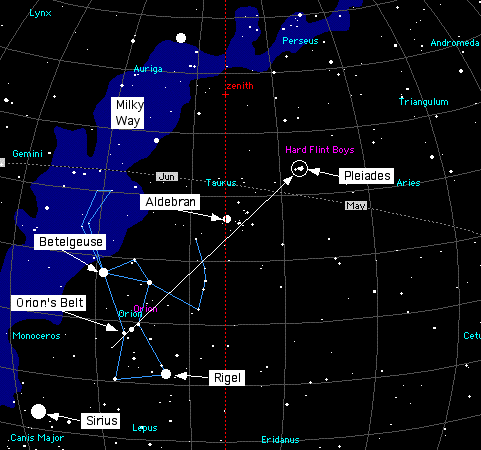
 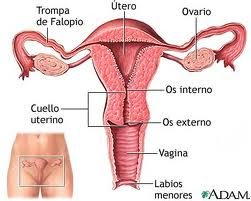 

(ABCD) Double Square in Solomons Temple
EL LUGAR SANTISIMO DEL TABERNACULO Y DEL TEMPLO DE SALOMON TENIA FORMA DE CUBO
NOTEN LA ESTRELLA DE 5 PUNTAS EN EL CENTRO DEL EXAGONO CENTRO DE LA ESTRELLA DE 6 PUNTAS
EL EXAGONO TAMBIEN ES UNA REFERENCIA AL CUBO.
NOTEN QUE EN ESTA ESTRELLA DE 6 PUNTAS HAY 13 TRIANGULOS DE 5 PUNTAS, OSEA QUE NOS DA UN NEXO CON LAS 12 CONSTELACIONES DEL ZODIACO, CON LAS 12 HORAS DEL DIA, CON LAS 12 LUNAS QUE HAY EN EL CALENDARIO, CON LA SANTA CENA EN EL CONTEXTO A LOS 12 APOSTOLES, CON LAS 12 TRIBUS DE ISRAEL, CON EL MERIDIANO DE GREENWICH E INCLUSO CON ROSE LINE, ETC,ETC. TODO TIENE COMO PATRON LA ESTRELLA DE 6 PUNTAS, OSEA LA UNION ENTRE EL HOMBRE Y LA MUJER QUE LA TRADICION RELIGIOSA "OLVIDO". ESTE ES EL PATRON ESOTERICO DETRAS DE APOCALIPSIS 22 EN SU RELACION CON VENUS.

Noten el MONSTRUOSO NUMERO 36, incluso con la FORMA DE ORION, en una estrella de 6 puntas. Son siete pelotitas, con 6 perimetrales. 6x6=36
AQUI ESTA EL ULTRA SECRETO DEL NEXO 666 CON LA PIRAMIDE DE LOUVRE, EN EL CODIGO DA VINCI. 1+2+3+ 4+5+6+7+8+9 +20+11+12+13 +14+15+16+17+18 +19+20+21+22+23 +24+25+ 26+27+28+29 +30+31 +32+33+ 34+35 +36=666

15. El que hablaba conmigo tenía una caña de medir, de oro, para medir la ciudad, sus puertas y su muro.
16. La ciudad se halla establecida en cuadro, y su longitud es igual a su anchura; y él midió la ciudad con la caña, doce mil estadios; la longitud, la altura y la anchura de ella son iguales. (LA CUBICACION DE UNA ESFERA. HAY UN OBVIO NEXO ALQUIMICO. LA GRAN CIUDAD ESTA DISEÑADA CON EL MISMO PATRON DE LA GRAN PIRAMIDE DE GIZE)

Figura 16. La relación geométrica entre el codo real y el metro.
LA CLAVE MATEMATICA ESTA EN LA ECUACION:
PI-(PHI ELEVADO AL CUADRADO)=CODO REAL
 |
|
3.1416 - 2.61800 = 0.5236
|
3.1416-2.618=0.5236
CODO REAL=.5236
ESTE ES EL SECRETO DEL NEXO "ROSE LINE", EN EL CONTEXTO AL METRO Y EN EL CONTEXTO A LA PIRAMIDE DE LOUVRE.
17. Y midió su muro, ciento cuarenta y cuatro codos, de medida de hombre, la cual es de ángel.
21. Las doce puertas eran doce perlas; cada una de las puertas era una perla. Y la calle de la ciudad era de oro puro, transparente como vidrio.
22. Y no vi en ella templo; porque el Señor Dios Todopoderoso es el templo de ella, y el Cordero.
23. La ciudad no tiene necesidad de sol ni de luna que brillen en ella; porque la gloria de Dios la ilumina, y el Cordero es su lumbrera.


Haz clic en la imagen para volver
INICIACIÓN A LOS NÚMEROS DE LA ARQUITECTURA O DE COMO DARLE FORMA A UN EDIFICIO
Los números pueden estar explicados matemáticamente en la “red” pero el problema que plantea el conocimiento de la arquitectura es: ¿cómo se le da forma con esos números a un edificio?. En arquitectura los números operan a partir de los polígonos estrellados formando concatenaciones, tal y como a continuación vamos a describir.

NÚMERO DE ORO - PENTÁGONO
El número de oro viene dado por la solución a la ecuación de segundo grado
x + x² = 1 x = 1+√5 /2 = 1,618033989
Propiedades 1/ 1,618 = 0,618 1,618... x 1,618... = 2,618...
Dado una circunferencia de radio 1 el lado del decágono inscrito en él es 0,618...
Dado un pentágono de lado 1, las diagonales de ese pentágono = 1,618...
La técnica con la que opera la arquitectura es la de las concatenaciones.
Una de ellas, la más usual, es la que presentamos en el dibujo. Si la circunferencia en color azul tiene R=1 el radio de la roja es R= 2,618, correspondiente a la que presentamos en “El vitruvio” de Leonardo da Vinci en la portada de este trabajo.
Se aplicará en la restitución de una tabla de F. Brunelleschi Nº 6.
 
NÚMERO DE PLATA - EL OCTÓGONO
Así como el número de oro está asociado a la √5 el número de plata está asociado a √2 y presenta una serie de propiedades similares a las del número de oro.
√2 = 1,414213562 tg. 22,5º = 0,414213562
tg.67,5º = 2,414213562
1/2,4142... = 0,4142... 2,4142... x 1,4142... = 3,4142...
Observa nuevamente la concatenación, esta vez con el octógono, de la circunferencia en color azul sobre la de color rojo.
Si el radio de la circunferencia azul es 1 la de color rojo es 2,4142....
Si el radio de la circunferencia azul es 0,4142... la de rojo es 1.
Aquí tenéis un ejemplo.
Se aplicará en la Rix House de J. Soane Nº 3.
NÚMERO DE PLATINO - EL HEXÁGONO
De igual forma que el número de oro está relacionado con la √5 y el de plata con la √2, el de platino lo va a estar con la √3
√3 = tg.60º = 1,732050808
1,732... x 2,732... = 4,732...
Combinación, esta, muy utilizada por Andrea Palladio.
Observa la concatenación de la circunferencia azul sobre la de rojo, a través del hexágono, directamente a la circunferencia azul. Si el radio de la circunferencia color azul es 1 el de la circunferencia en color rojo es 2 y el lado del triángulo inscrito es 2 x 1,732...
Este polígono es el más prolífico en la historia de arquitectura como vamos a verlo en los ejercicios.
Aquí tenéis un ejemplo.
Se aplicará al resto de los trabajos Nº 1 - 2 - 4 y 5.
Todos los derechos reservados. Depósito Legal ZA - Nº 69 - 1998
Página web optimizada para ver en resolución de 1024 x 768
2006 - 2007
|
|
|
|
Réponse |
Message 22 de 41 de ce thème |
|
|
CODIGO DA VINCI=IGLESIA CATOLICA
CATOLICOS, ESTUDIEN EL CATOLICISMO ESOTERICO.
EL PSEUDO PROTESTANTISMO NO TIENE NI IDEA DE LA VIRGEN.
|
 First First  Previous 2 to 2 of 2 Next Previous 2 to 2 of 2 Next  Last Last  |
|
|
TODO EL CODIGO DA VINCI SE DESARROLLA EN EL CONTEXTO A TEMPLOS CATOLICOS Y COMO REFERENCIA Y CENTRO EL CATOLICISMO. EL PSEUDO PROTESTANTISMO O FALSO PROTESTANTISMO NO TIENE NI IDEA DE ALQUIMIA, NO TIENE NI IDEA DE VESICA PISCIS, NO TIENE NI IDEA DEL NUMERO DE ORO, NO TIENE NI IDEA DEL ESOTERISMO BIBLICO, ETC,ETC,ETC.
EL PSEUDO PROTESTANTISMO O FALSO PROTESTANTISMO, QUE EN REALIDAD ENSEÑA MUCHOS DOGMAS QUE SON CATOLICOS, ESTA A AÑOS LUZ DEL NEXO DE EGIPTO CON LA BIBLIA. NO TIENEN NI IDEA DE TODAS ESTAS COSAS. ES MAS LOS PRINCIPALES PREDICADORES DEL MATRIMONIO DEL SEÑOR EN LOS EEUU, VIENEN DE LA IGLESIA CATOLICA. ES MAS, YO TODAVIA ME CONSIDERO CATOLICO APOSTOLICO ROMANO.
ES QUE EL CATOLICISMO ESTA MIMETIZADO CON LA MASONERIA. TODOS LOS ICONOS MASONICOS VIENEN DEL TEMPLO DEL SANTO SEPULCRO, QUE ES CATOLICO.
LOS PROTESTANTES O FALSOS PROTESTANTES NO TIENEN NI IDEA DEL ESOTERISMO DETRAS DE LA EUCARISTIA. ¿PORQUE LA MISA CATOLICA ESTA EN FUNCION A VESICA PISCIS?
¿QUE PROTESTANTE HACE LA SANTA CENA COMO NEXO CON JUAN 21:11?
NINGUNO. NI LOS ADVENTISTAS, NI LOS EVANGELICOS, NI LOS TESTIGOS DE JEHOVA, NO LOS METODISTAS, ETC,ETC. NINGUNO
SON BEBES DE PECHO. NO TIENEN NI IDEA DE ALQUIMIA.
EL CATOLICISMO ESTA MUCHISIMO MAS DESARROLLADO. ESTUDIEN LAS CONSTRUCCIONES CATOLICAS. ES MONSTRUOSO EL NEXO ASTRONOMICO CON LA PRECESION DE LOS EQUINOCCIOS.
¿QUE SABEN LOS FALSOS PROTESTANTES QUE ESTUDIAN CON UNA BIBLIA CANONIZADA POR EL PAPADO DE LA FLEUR DE LIS?
ES QUE TODO ES EGO. PRIMA EL EGO. SE DEMONIZA AL CATOLICISMO POR ENVIDIA. INSISTO, ES LA IGLESIA MAS DESARROLLADA Y LA QUE MAS USA YHWH, EN FORMA ESOTERICA A NIVEL MUNDIAL.
CONSEJO PARA CATOLICOS: ESTUDIEN EL CATOLICISMO ESOTERICO. NO SE DEJEN LAVAR EL CEREBRO POR RESENTIDOS Y ENVIDIOSOS.
HAGAN CASO A LO QUE DECIA EL SEÑOR. "POR SUS FRUTOS LOS CONOCEREIS"
ESTUDIAN EL MISMO NUEVO TESTAMENTO QUE CANONIZO EL MISMO PAPADO.
|
|
|
|
|
|
Réponse |
Message 23 de 41 de ce thème |
|
EN EL AÑO 1989, CON LUNA LLENA EL 22/3 (¿SECRETO DEL 322 DECODIFICADO?, LA PIRAMIDE DE LOUVRE FUE INAGURADA EN EL OCTAVO DIA DEL VERDADERO CALENDARIO LUNI-SOLAR HEBREO. LA "VIRGEN DE GUADALUPE" ES MARIA MAGDALENA-NEXO CON LA PIRAMIDE DE LOUVRE-¿PORQUE FRANSUA MITERRAND FUE FRANC MASON DE GRADO 33?-NEXO JANUKAH
Fases Lunares para el mes de Marzo del año 1989
En el calendario lunar se calculan los años según los ciclos de la luna en lugar de los del sol como se hace en el calendario occidental. En dicho calendario lunar, cada mes lunar corresponde a una lunación, que comprende el período entre dos momentos en que la luna se halla exactamente en la misma fase lunar. Cada mes lunar comprende 29.53 días solares.
Aunque cada día del mes lunar correspondería a una fase lunar, las fases de la luna a las que se conoce con un nombre concreto son la Luna Nueva, Cuarto Creciente, Luna Llena y Cuarto Menguante. Estas fases lunares se asocian a diferentes porcentajes de iluminación o ángulos de fase que van del 0% en la luna nueva, 50% en los cuartos y 100% en la luna llena.
| Día | Fase lunar | Porcentaje iluminado |
| 7 |
Luna Nueva |
En la fase lunar de Luna Nueva la visibilidad es del 0% |
| 14 |
Cuarto Creciente |
En la fase lunar de Cuarto Creciente la visibilidad es del 50% |
| 22 |
Luna Llena |
En la fase lunar de Luna Llena la visibilidad es del 100% |
| 29 |
Cuarto Menguante |
En la fase lunar de Cuarto Menguante la visibilidad es del 50% |
Se inaugura la pirame de cristal del Museo de Louvre
29/03/2011
El 29 de marzo de 1989 se inauguró la gran piramide de cristal ubicada en la entrada del Museo de Louvre en París, Francia.
Fue diseñada por el arquitecto Ieoh Ming Pei, para centralizar el acceso de los visitantes, que descienden por ella a un recibidor subterráneo por el que se accede a las diversas alas del museo.
La obra esta compuesta por 666 rombos de vidrio distribuidos en un área de mil 250 metros cuadrados.
El Museo del Louvre es el museo nacional de Francia consagrado al arte anterior al impresionismo, tanto bellas artes como arqueología y artes decorativas. Es considerado el más importante del mundo, por la riqueza de sus colecciones y por la influencia que ha ejercido en los restantes museos del planeta.
Está ubicado en el antiguo palacio real del Louvre, y actualmente promueve la apertura de dos subsedes, en Lens (Francia) y en Abu Dabi (Emiratos Árabes Unidos).
LA PIRAMIDE DE LUOVRE TIENE UN FUERTE NEXO CON LA "VIRGEN DE GUADALUPE", EN EL MARCO A QUE EL SEPTIMO DIA DE JANUKAH, OSEA EL DIA NUMERO 266 DEL CALENDARIO LUNI-SOLAR HEBREO, EN EL MARCO A QUE 266 DIAS=36 SABADOS LUNARES=PERIODO DE GESTACION DE UN BEBE=9 MESES LUNARES, CAYO EXACTAMENTE EN EL MISMO DIA DE LA VIRGEN MEXICANA. EL DIA 12 DE DICIEMBRE O 12/12 ES UN NEXO ESOTERICO CON HECHOS 12:12 ADONDE JUSTAMENTE EL NUEVO TESTAMENTO HACE REFERENCIA A JUAN MARCOS, OSEA EL HIJO DE JESUCRISTO Y MARIA LA MAGDALENA. NOTEN QUE EN 1989, LA PRIMERA LUNA LLENA FUE EL 22 DE MARZO Y QUE LA PIRAMIDE DE LOUVRE, FRANSUA MITERRAND, UN MASON DE GRADO 33, LA INAGURO, EL 29 DE MARZO, OSEA EL OCTAVO DIA, EN EL MISMO DIA QUE FUE LAS BODAS DE CANA. EL SABADO LUNAR ES SEPTIMO Y TAMBIEN OCTAVO DIA CONSIDERANDO A LA LUNA LLENA. OSEA QUE TODA LA REFERENCIA DEL 666 DE LOUVRE TIENE REFERENCIA A LOS 36 SABADOS LUNARES DE LA GESTACION DE UN BEBE. (1+2+3+4+5+6+7+8+...+33+34+35+36=666).
VIRGEN DE GUADALUPE 12:12
HECHOS 12:12=JUAN MARCOS
12:12=TREINTA Y TRES
TODO EL NEXO DE ROSWELL, NUEVO MEXICO, EN EL AÑO 1947, TIENE UN NEXO CON LA VIRGEN MEXICANA, EN EL CONTEXTO AL NUMERO 33. DIOS NO JUEGA A LOS DADOS COMO DECIA ALBERT EINSTEIN. PARIS, LA CIUDAD LUZ.
|
|
|
|
Réponse |
Message 24 de 41 de ce thème |
|
|
|
|
Réponse |
Message 25 de 41 de ce thème |
|
BARCELONA (CATALUÑA / CATAROS / CATOLICO / CAT (OJOS DE GATO) / VESICA PISCIS / CIUDAD DE 7 COLINAS / "EXPERIMENTO FILADELFIA" (NEXO CON LA VIRGEN DEL CARMEN / MONTE CARMELO)
List of cities claimed to be built on seven hills
From Wikipedia, the free encyclopedia
City of Seven Hills usually refers to Rome. However, there are many cities that claim to be built on seven hills.
Americas[edit]
- Albany, New York[3]
- Asunción, Paraguay - The city is one of the oldest in South America. The seven hills are difficult to detect, but are: Cabara, Cerro Lambaré, Clavel, Cachinga, Cachinga, Tacumbú amd Tarumã
- Athens, Texas, United States[4]
- Cincinnati, Ohio, United States (now encompasses more than seven) [5][6]
- Ellicott City, Maryland, United States [7]
- Guaranda, Ecuador[8][9]
- Lynchburg, Virginia, United States College Hill, Garland Hill, Daniel's Hill, Federal Hill, Diamond Hill, White Rock Hill, and Franklin Hill were the original "Seven Hills" of the City of Lynchburg.[10]
- Nevada City, California, United States, built on Piety, Lost, Prospect, Aristocracy, Boulder, Nabob, and Buckeye Hills [11]
- Nixa, Missouri, United States
- Providence, Rhode Island, built on Christian Hill, College Hill, Constitution Hill, Federal Hill, Smith Hill, Tockwotten Hill, and Weybosset Hill.
- Richmond, Virginia, United States, built on numerous hills and escarpments to include Union Hill, Church Hill, Council Chamber Hill, Shockoe Hill, Gambles Hill, Navy Hill and Oregon Hill.[12]
- Rome, Georgia, United States
- Saint Paul, Minnesota, United States
- San Diego, California, United States[citation needed]
- San Francisco, California, United States (see List of hills in San Francisco)
- Seattle, Washington, United States (see Seven hills of Seattle)
- Seven Hills, Ohio, United States
- Somerville, Massachusetts, United States, built on Clarendon Hill, College Hill, Spring Hill, Winter Hill, Central Hill, Plowed Hill, Cobble Hill.
- Staten Island, New York, United States - Fort Hill, Ward Hill, Fox Hill, Grymes Hill, Emerson Hill, Todt Hill, and Richmond Hill.
- Tallahassee, Florida, United States
- Victoria, Argentina
- Worcester, Massachusetts, United States, built on Airport Hill, Bancroft Hill, Belmont Hill, Grafton Hill, Green Hill, Pakachoag Hill, and Vernon Hill.
- Yonkers, New York, United States[13][14]
- Amman, Jordan
- Jerusalem, Israel This important religious center is situated on seven hills, but considering the various changes of the landscape over the centuries, it has not been possible to locate the hills on which the city rests.
- Macau
- Mecca, Saudi Arabia
- Mumbai Saat Dweep Samuh (now joined, into a peninsula)
- Tehran, Iran
- Thiruvananthapuram, India
- Tirumala, India In Asia, there are few cities on seven hills, except in India. One of the hill town of Tirumala is precisely where the Temple of Seven Hills, the Tirumala Venkateswara. This temple is affirmed to be the most active place of worship in the world.
- Abergavenny, South Wales, United Kingdom
- Armagh, in Northern Ireland, United Kingdom
- Athens, Greece. The historical seven hills of Athens are Acropolis, Areopagus, Philopappus Hill (or Hill of the Muses), Hill of the Nymphs, Pnyx, Mount Lycabettus, and Mount Anchesmos (or Tourkovounia).
- Bamberg, Bavaria, Germany, The seven hills of Bamberg are; Cathedral Hill, Michaelsberg, Kaulberg/Obere Pfarre, Stefansberg, Jakobsberg, Altenburger Hill, and Abtsberg.
- Barcelona, Catalonia, Spain said to be built on Mont Tàber, La Rovira, El Coll, El Carmel, La Peira, El Putxet and Montjuïc
- Bath, England, United Kingdom
- Bergen, Norway (see Seven Mountains, Bergen)
- Brussels, Belgium, said to be built on St.Michielsberg, Koudenberg, Warmoesberg, Kruidtuin, Kunstberg, Zavel and St.Pietersberg
- Budapest, Hungary
- Cagliari, Sardinia, Italy
- Cáceres, Spain[15]
- Ceuta, Spain
- Coatbridge, Scotland, United Kingdom
- Edinburgh, Scotland, United Kingdom (see Hills of Edinburgh)
- Gorzów Wielkopolski, Poland
- Iaşi, Romania (see Seven hills of Iaşi)
- Istanbul, Turkey (see Seven hills of Istanbul)
- Kaposvár, Hungary
- Kiev, Ukraine Borichev, Shchekovitsa, Starokievska and Khorevitsa.[16]
- Lisbon, Portugal
- Lviv, Ukraine
- Madrid, Spain [17]
- Moscow, Russia (See Seven hills of Moscow)
- Nijmegen, Netherlands
- Plovdiv, Bulgaria
- Prague, Czech Republic, said to be built on seven or nine hills: Hradčany, Vítkov, (Opyš), Větrov, Skalka, (Emauzy), Vyšehrad, Karlov and Petřín
- Pula, Croatia
- Rome, Italy (see Seven hills of Rome)
- Saint-Étienne, France
- Sheffield, England, United Kingdom
- Telšiai, Lithuania
- Torquay, England, United Kingdom
- Turku, Finland
- Veszprém, Hungary
- Zevenbergen, Netherlands
http://en.wikipedia.org/wiki/List_of_cities_claimed_to_be_built_on_seven_hills
|
|
|
|
Réponse |
Message 26 de 41 de ce thème |
|
| From: EL ULTIMO (Original message) |
Sent: 27/12/2014 00:27 |
|
(ANTIGUO PACTO O ANTIGUO TESTAMENTO) = 39 ESCRITOS
PACTO RENOVADO O NUEVO TESTAMENTO = 27 ESCRITOS
|
LA MISMA BIBLIA ESTA DISEÑADA EN FUNCION A LAS PLEYADES POR EL MISMO PAPADO, TAMBIEN EN FUNCION A LAS PLEYADES. GLORIA A DIOS TODOPODEROSO QUE EL PAPADO CANONIZO LA ESCRITURA. LA MISMA BIBLIA ESTA DISEÑADA CON EL PATRON DE FILADELFIA, OSEA LAS PLEYADES. LA MISMA ESCRITURA TIENE EL PATRON DE LA CONSTELACION DE TAURO. NOTEN EL NUMERO 66=33*2 E INCLUSO EL NUMERO 12, CON REFERENCIA A LOS PROFETAS MENORES, ES UN NEXO CON LA SANTA CENA. TODO ES ALQUIMIA, EN UN FUERTE NEXO CIENTIFICO CON LA CONSTELACION DEL TORO.
|
|
|
 Premier Premier
 Précédent
12 a 26 de 41
Suivant Précédent
12 a 26 de 41
Suivant Dernier
Dernier
|
|
| |
|
|
©2025 - Gabitos - Tous droits réservés | |
|
|


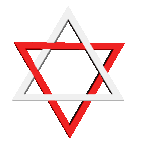




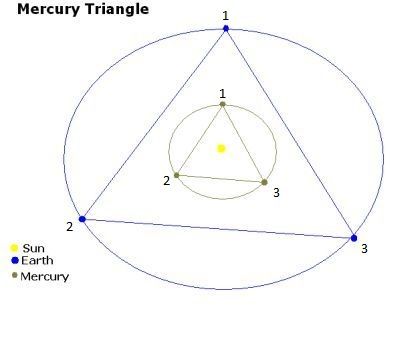
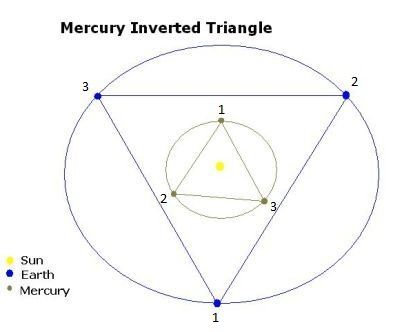
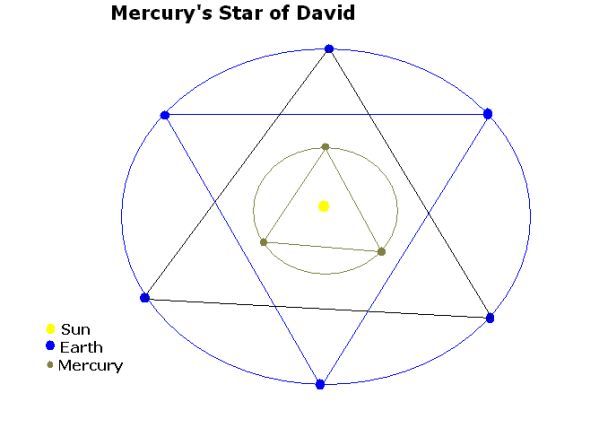



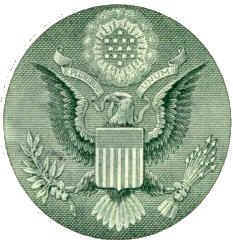
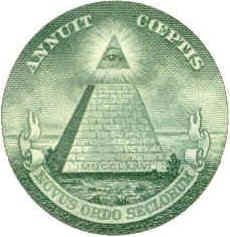


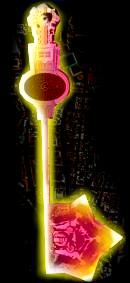

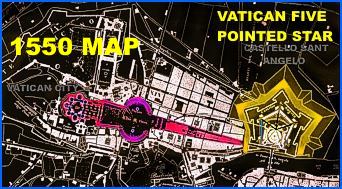


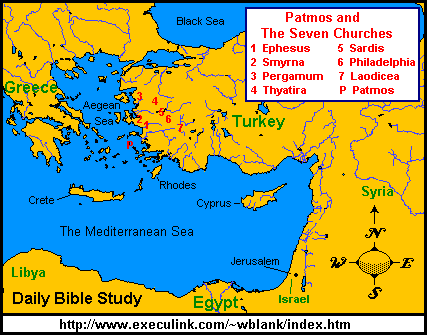
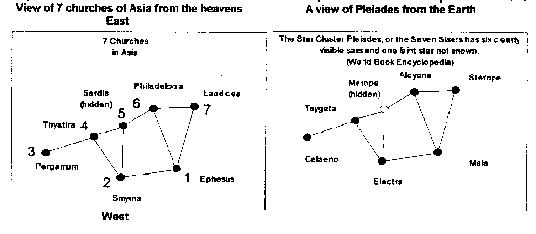


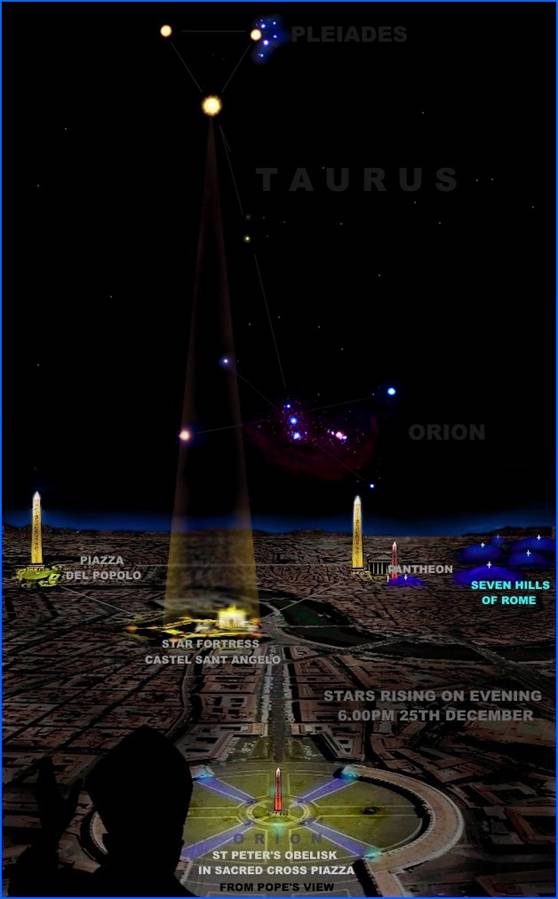
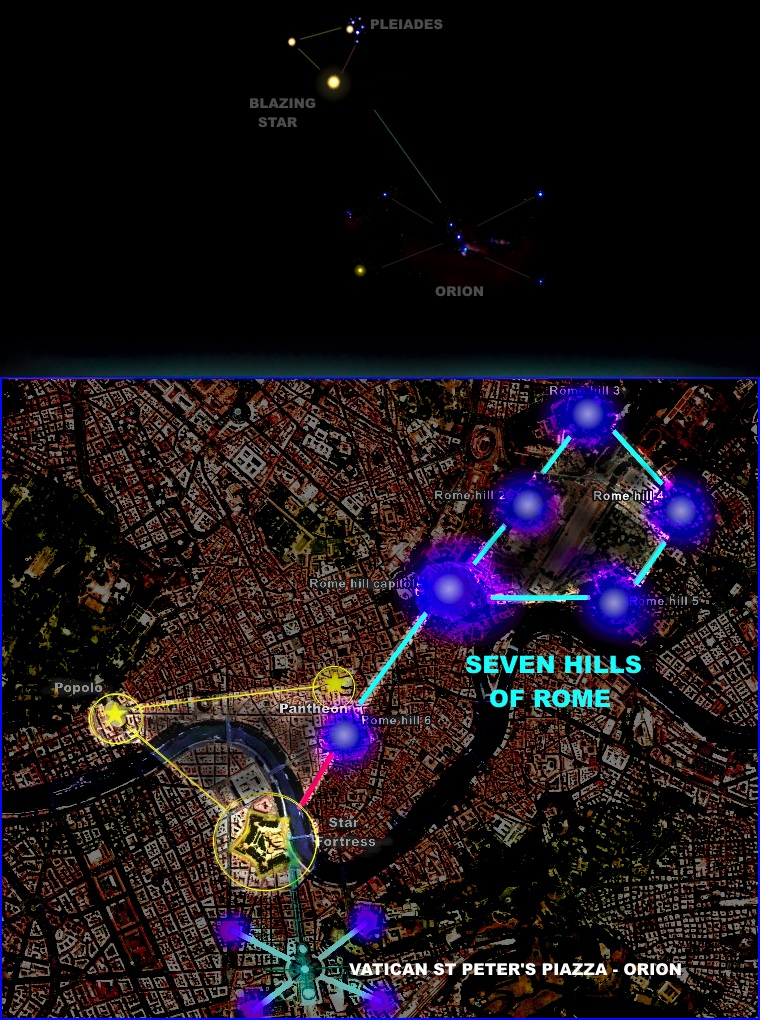
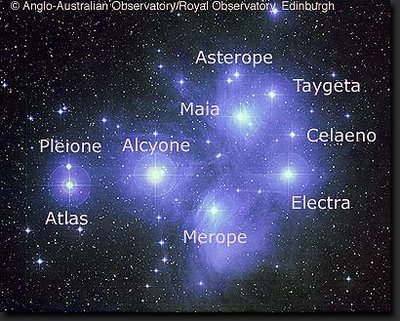
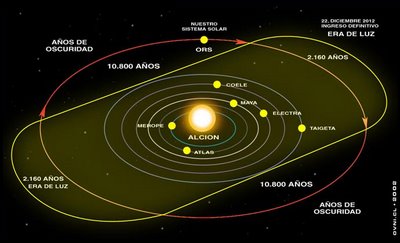


.jpg)
